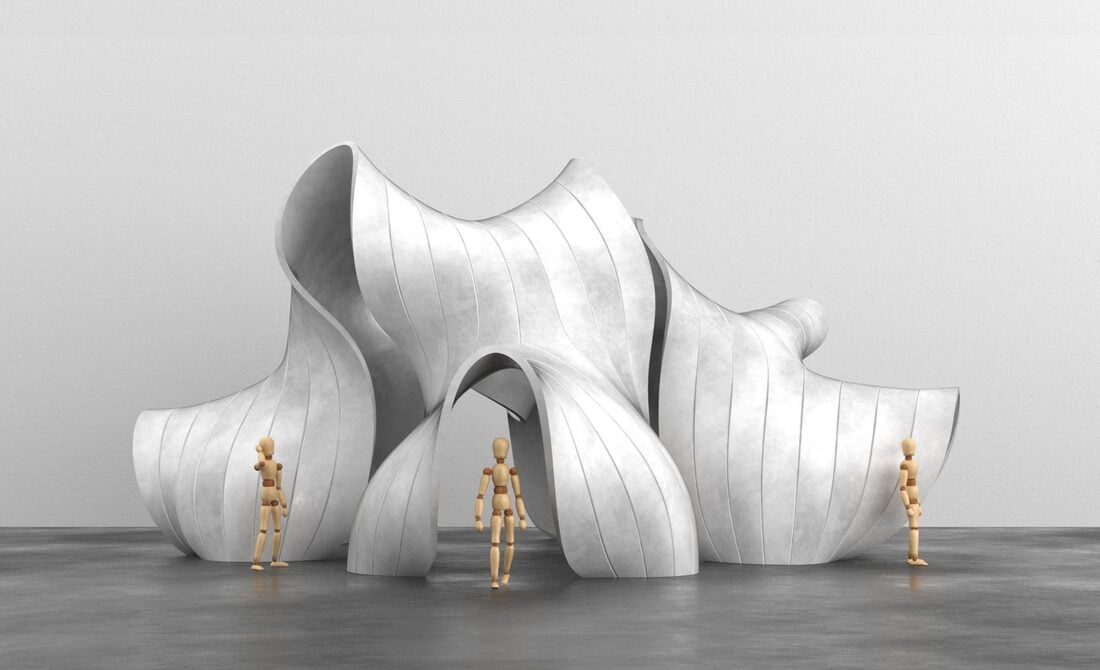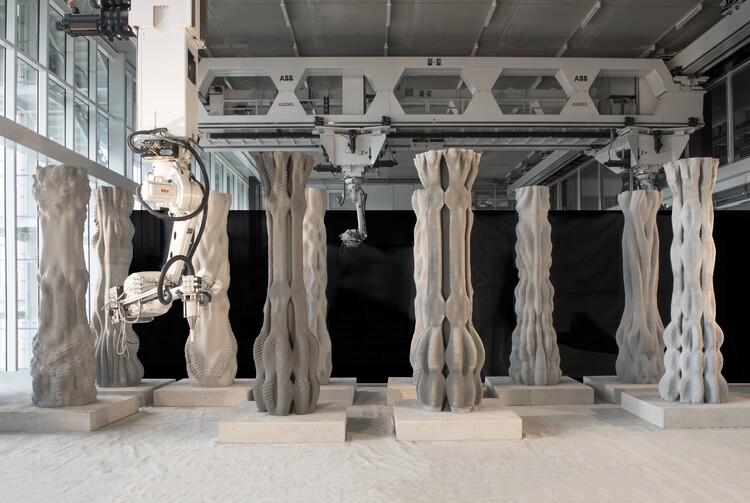In the ever-evolving world of architecture, advancements in technology have always played a crucial role in shaping the way we design and construct buildings. With the rapid progression of 3D printing and computational power, architects now have an unprecedented level of artistic freedom when it comes to creating intricate and textural facades. This article delves into the possibilities that new technology offers in sculpting facades, exploring the intersection of art, innovation, and architecture.
The Rise of 3D Printing in Architecture
Over the past year, we have witnessed the materialization of architectural projects that utilize 3D printing technology at the facade level. Studio RAP in Amsterdam has been at the forefront of this movement, successfully manufacturing 3D-printed modularized systems with algorithmically generated geometries. One notable project is the “Ceramic House,” a boutique store in Amsterdam. The facade of this building is composed of individually 3D-printed ceramic tiles mounted on a laser-cut stainless steel frame, creating a visually stunning and unique texture inspired by the art of weaving.

Ceramic House / Studio RAP. Image © Riccardo De Vecchi
Pushing the Boundaries of 3D Printing
While much of the initial exploration of 3D printing in architecture has focused on structural viability and layered manufacturing processes, there is still much to be explored in terms of aesthetics. Researchers at ETH Zurich, for example, have been actively investigating the potential of 3D printing in fabricating richly detailed architectural elements. Their work includes the development of highly ornamental concrete columns and metal screens, drawing inspiration from traditional construction techniques and craftsmanship. By combining traditional techniques with cutting-edge technology, architects can create textural and visually striking facades.
Concrete Choreography / ETH Zurich. Image © Axel Crettenand
Nature-Inspired Art and Computational Algorithms
Artists and architects have also been exploring the artistic opportunities presented by 3D printing technology. Michael Hansmeyer and Benjamin Dillenburger, for instance, create incredibly complex geometries inspired by processes observed in nature. Their algorithms generate intricate designs that can be 3D printed, resulting in architectural pieces such as the “Arabesque Wall” and “Digital Grotesque II.” These pieces blur the lines between the organic and the ornamental, showcasing the limitless possibilities of combining computational algorithms with 3D printing technology.

Digital Grotesque II / Benjamin Dillenburger and Michael Hansmeyer. Image © Demetris Shammas
Another artist, Barry Wark, takes a different approach by using artificial intelligence to mimic nature’s erosion processes. His AI-developed artwork creates forms that further challenge traditional notions of ornamentation and aesthetics. By leveraging the capabilities of 3D printing and image-generating software, architects and artists can push the boundaries of creativity and innovation, bringing new expressive textures to architecture and cities.
3D Printed Sand Wall / Barry Wark. Image Courtesy of Barry Wark
The Intersection of Art and Architecture
As the incorporation of 3D printing and image-generating technology into architecture continues to evolve, questions about artistry, decoration, and ornamentation arise. This technological advancement presents an opportunity for architects to draw inspiration from the world of art and sculpture, blurring the lines between different disciplines. The availability of ultra-fast image-generating software and the manufacturing opportunities brought by 3D printing open up a new world for architects to explore.
Embracing Creative Possibilities
With the newfound freedom provided by advanced technology, architects can now experiment with different textures, geometries, and patterns in their facades. They are no longer limited by traditional construction techniques or nostalgic notions of ornament. The combination of computational algorithms, 3D printing, and image-generating software allows architects to create truly unique and expressive facades that redefine the boundaries of architectural design.
The Future of Textural and Expressive Architecture
The incorporation of new technology in architecture is still in its early stages. As 3D printing and image-generating technology continue to advance, the possibilities for artistry, decoration, and ornamentation in architecture will only expand. Architects and designers have the opportunity to collaborate with artists and explore interdisciplinary approaches, pushing the limits of creativity and innovation.
In conclusion, new technology, particularly 3D printing and computational algorithms, offers architects unprecedented opportunities to sculpt facades with intricate textures and expressive designs. By embracing these creative possibilities, architects can redefine the boundaries of architectural design and bring a new level of artistry to our cities. The intersection of art and architecture opens up endless possibilities for innovation and creativity, shaping the future of textural and expressive architecture.
